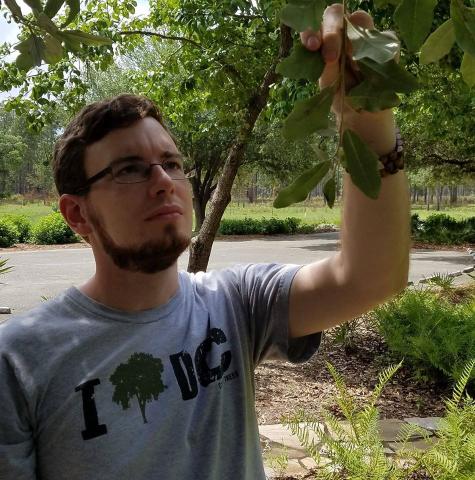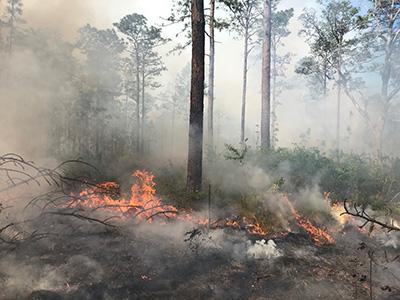Monitoring & Next Steps
Monitoring
Monitoring is an essential component of the ASCC study. Research partners from several institutions are working together to investigate the effectiveness of different silvicultural treatments aimed at creating adaptive ecosystems. Some of the monitoring items include:
Fuelbed continuity and prescribed burning effectiveness
Diversity of groundcover and woody understory plants
Stand-level water use and water yield
Canopy tree growth
Activity patterns of large and small mammals
Highlights
At the Jones Center at Ichauway, a site dominated by longleaf pine (Pinus palustris Mill.) in southwestern Georgia, one of the main climate change effects being considered under the ASCC project is increased temperature and drought stress. In the transition plots at the Jones Center, where management is aimed at actively changing the ecosystem to encourage adaptive responses to these stressors, one approach is a shift in the hardwood component of the forest towards more xeric species, including turkey oak (Quercus laevis Walt.).

Sean Reynolds, a recent graduate from Auburn University with an M.S. degree in Forestry, successfully defended his thesis research, addressing the feasibility of regenerating turkey oak seedlings in a longleaf ecosystem by investigating the relationships between overstory metrics, environmental conditions, and seedling leaf gas exchange. Gas exchange and environmental measurements were taken eight times over the 2019 growing season, and then analyzed in relation to canopy openness, as calculated from hemispherical photographs. Seedling physiological performance was negatively correlated with increased overstory levels in mesic soils on site. This effect of the overstory was lessened when environmental conditions were stressful, and was not observed in more xeric soils. Sean concluded that turkey oak seedlings in mesic soils experienced competition from the overstory, with no evidence of facilitation in either mesic or xeric soils. Efforts to transition a longleaf pine ecosystem towards greater drought tolerance may therefore be most effective when planting of turkey oak seedlings is concentrated in canopy openings.
The Jones Center at Ichauway ASCC site has begun implementing prescribed fire treatments in the ASCC plots this spring to begin monitoring fuelbed continuity and prescribed burning effectiveness. This season’s fire assessments are based around individual hardwoods to help inform the spatial extent of hardwood impacts on fire energy release within the ASCC treatment plots. Andy Whelan, Research Associate II at the Jones Center, is leading this effort, along with Dr. Seth Bigelow, Forest Ecologist at the Jones Center and the ASCC Site Lead. Two years from now, when the ASCC treatment effects have developed further (especially in resistance plots), the Jones Center staff will do ecosystem-level fire assessments. Preliminary results suggest that on wetter days, such as April 23, 2019 in Ichauway, GA, the prescribed fires are burning better in the ASCC transition plots than in the other ASCC treatment plots due to better-developed ground cover and better ventilation from a sparser canopy.
